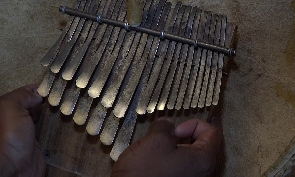 The lamellophone - Photo credit: Smithsonian National Museum/Youtube
The lamellophone - Photo credit: Smithsonian National Museum/Youtube
The lamellophone is a musical instrument that has been used in many parts of Africa for centuries. A local name is assigned to brand it depending on how it’s made and the materials that go into its crafting. In some localities, it is referred to as mbiras, lukembes, and kalimbas, according to Europeana. Historians trace the origins of the lamellophones to Cameroon some three thousand years ago.
Austrian musicologist and a renowned expert in African music, Gerhard Kubik, was the first to have used the term lamellophone because of the confusion its description was generating among European music enthusiasts. The musicologist thought descriptions such as hand or thumb piano were misleading and did not reflect the soul of the musical instrument.
The first lamellophone was made out of cane and raffia, which was an abundant and easily accessible raw material in the region. The use of raffia predates early men using metal for various objects somewhere around 200 and 500 BCE. The use of metal in the production of lamellophones occurred during the first millennium in the present-day Democratic Republic of Congo, Zimbabwe, and Mozambique.
The musical instrument was adopted by various cultures as a result of the migration of the Bantu-speaking natives. It was first spotted in Katanga, moved to the lower Zambezi valley, and landed in the Nyasa/Ruvuma culture area in Southeast Africa.
The craftsmen in the Zimbabwean region modernized the use of metal in building the lamellophone, according to zvembira, it became the hub of lamellophone technology. Since the 15th century, the musical instrument has become significant in many cultures, and thereby, its subsequent adoption.
It is believed that the Portuguese trading posts in Zimbabwe may have contributed largely to the export of the instruments to other parts of the continent. With time, it became an essential instrument aiding in the recitation of historical events and heroic exploits.
Historically, the lamellophone was used by traditional record keepers, who were the keepers of oral traditions and history. They used the instrument to accompany their songs, which recounted the history of their people, including stories of triumph and defeat, love and loss, and the exploits of heroes and villains.
The lamellophone’s unique sound made it an essential tool for these storytellers, as it helped to create a mood and convey the emotion of the tale being told. Additionally, the instrument’s portability made it easy for record keepers to travel from village to village, sharing their stories and music with people across the region.
Over time, the Lamellophone evolved into different forms, with new materials and designs being used to create different sounds and styles of music. It is a member of the idiophone family, which produces sound by the vibration of the instrument itself. The device consists of a series of metals or bamboo tongues attached to a resonator.
The player plucks or strikes the tongues with their fingers, producing a distinctive sound that varies in pitch depending on the length and thickness of the lamellae. Today, the instrument continues to be an essential part of African music and culture, with modern lamellophones being used in a wide range of genres, from traditional folk music to contemporary pop and jazz.